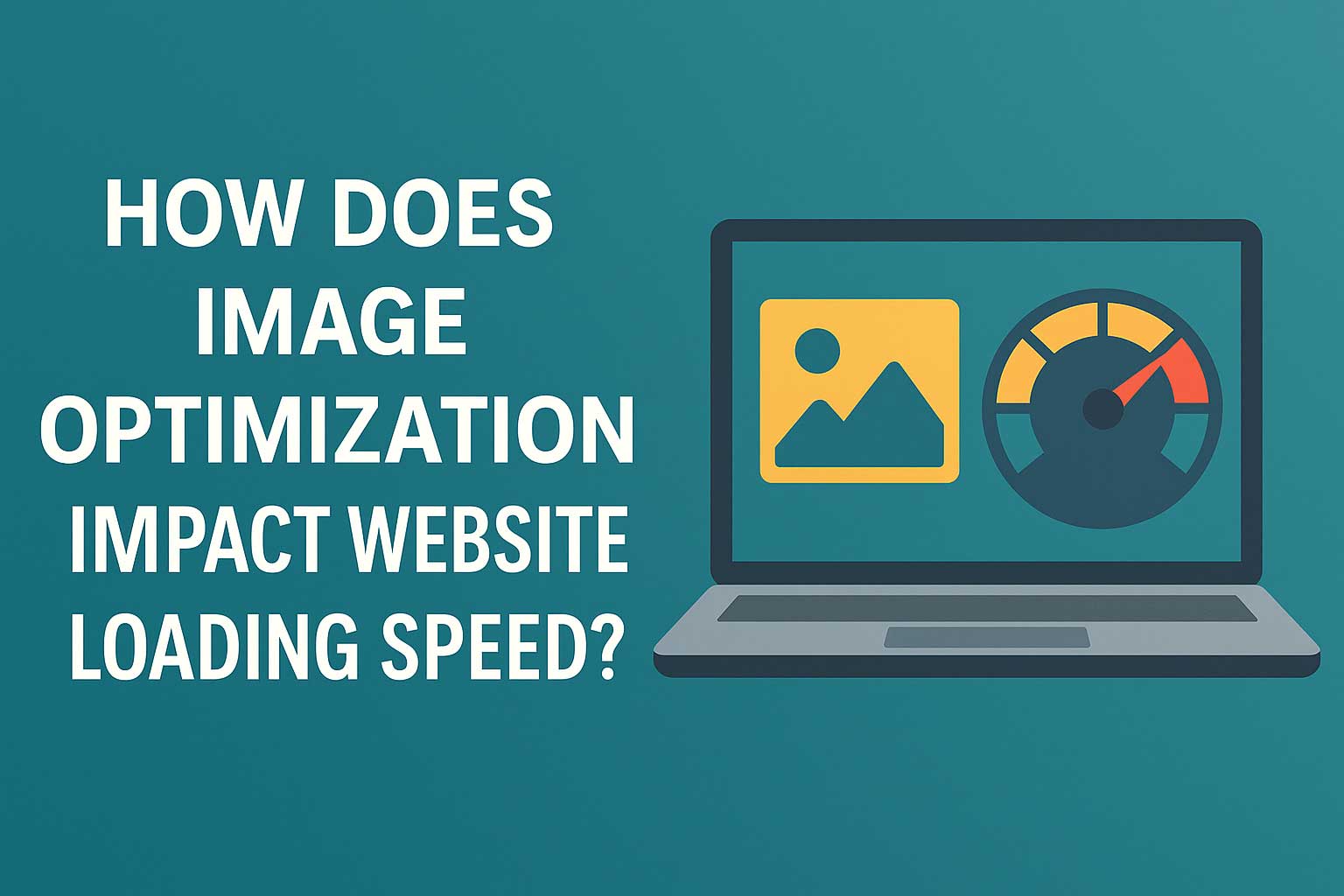
How Does Image Optimization Impact Website Loading Speed?
📅 Published: July 02, 2025 | Updated: July 02, 2025
Discover how image optimization boosts website loading speed, enhances user experience, and improves SEO. Learn practical tips backed by real data.
Introduction: Why Image Optimization Matters More Than Ever
If your website takes more than 3 seconds to load, you could be losing nearly 53% of your visitors—that's a fact reported by Google. In today's fast-paced digital world, users expect instant access. Slow-loading pages frustrate visitors and negatively impact search rankings.
So what’s the culprit? In many cases, unoptimized images are to blame.
This article answers the question: How does image optimization impact website loading speed? And more importantly, we'll show you how to fix it.
What Is Image Optimization?
Image optimization is the process of reducing the file size of images without compromising their quality—ensuring they load quickly while still looking great. It typically involves:
- Compressing images
- Using next-gen formats like WebP or AVIF
- Setting proper image dimensions
- Implementing lazy loading
- Serving responsive images based on screen size
Optimized images are lighter, faster, and smarter.
How Does Image Optimization Impact Website Loading Speed? (Direct Answer)
Image optimization directly improves website loading speed by reducing the amount of data that a user's browser needs to download. Smaller image files mean faster downloads, lower server loads, and quicker rendering times.
According to HTTP Archive, images make up over 45% of the total weight of a typical web page. Optimizing images can shave off hundreds of kilobytes, significantly speeding up page loads—especially on mobile devices and slow networks.
The Technical Breakdown: Why Image Size Affects Performance
🔄 Images Are Heavy and Often Unoptimized
Large JPEGs, PNGs, or even TIFF files are still used by many websites without any optimization. A single full-width banner image can weigh over 1MB—equivalent to thousands of lines of code.
🚀 Faster Images Mean Faster Renders
Browsers must load all page assets—scripts, styles, and images—before displaying a page. The heavier the images, the longer the Time to First Paint (TTFP) and Largest Contentful Paint (LCP)—key metrics in Core Web Vitals.
📉 Reduced Bandwidth = Happier Users
Optimized images use less data, helping users on limited or metered connections. Google rewards such UX-friendly experiences by ranking them higher.
Real-World Case Study
Before & After Optimization (E-commerce Example)
Source: Cloudinary Performance Report
Benefits of Image Optimization
- ✅ Faster Loading Times: Pages load quicker, improving both user experience and SEO.
- ✅ Better SEO Rankings: Google’s algorithm prioritizes fast-loading, mobile-friendly sites.
- ✅ Lower Bounce Rates: Users are less likely to leave if the page loads quickly.
- ✅ Increased Conversions: More speed means more trust—and more sales.
- ✅ Reduced Bandwidth Costs: Especially important for sites with high traffic or CDN usage.
How to Optimize Images (Step-by-Step)
1. Choose the Right Format
- JPEG: Best for photos
- PNG: Best for transparent images
- WebP / AVIF: Smaller and faster formats supported by modern browsers
2. Compress Without Losing Quality
Use tools like:
3. Serve Responsive Images
Use the srcset attribute in HTML:
<img src="image.jpg" srcset="image-480.jpg 480w, image-768.jpg 768w" sizes="(max-width: 768px) 100vw, 50vw" alt="Optimized Image">4. Enable Lazy Loading
<img src="image.jpg" loading="lazy" alt="Lazy Loaded Image">5. Use a CDN or Image Hosting Solution
Platforms like Cloudinary or Imgix dynamically optimize images on-the-fly.
Tools to Measure Image Impact on Speed
These tools highlight which images are slowing your site down and provide suggestions.
FAQs: Related Questions About Image Optimization
❓ Do all images need to be optimized?
Yes—especially above-the-fold images. Backgrounds, thumbnails, and product shots can also benefit from optimization.
❓ How much speed improvement can I expect?
On average, a 30–80% reduction in load time is possible after optimizing large images.
❓ Can WordPress optimize images automatically?
Yes. Plugins like:
- Smush
- ShortPixel
- Imagify
automate compression and even convert images to WebP format.
❓ Will optimization reduce image quality?
Not if done right. Use lossless compression when image fidelity is critical.
E-E-A-T in Action: Why You Can Trust This Guide
This guide was written by digital marketers and web developers at Fix Digital PH, with years of hands-on experience optimizing WordPress and custom websites for speed and SEO.
We use image optimization daily in client projects—backed by tools like Lighthouse, Cloudinary, and real-world A/B testing. Our recommendations are based on Google’s own guidelines, developer documentation, and industry best practices.
You're not just reading theory—you’re getting trusted advice from experts who do this every day.
Conclusion: Don’t Let Images Drag You Down
So, how does image optimization impact website loading speed?
The answer: It’s one of the most effective and overlooked performance upgrades you can make. Optimized images make your site load faster, rank better, and convert more visitors.
✅ Key Takeaways:
- Unoptimized images are often the #1 cause of slow pages.
- Image optimization can improve load times by up to 80%.
- Google rewards fast, user-friendly websites.
- Simple tools and plugins can handle it for you.
👇 Ready to Boost Your Site Speed?
Try our free Website Speed Test at Fix Digital PH and see how your images are impacting load time.
Every second counts. Optimize your images—optimize your business.